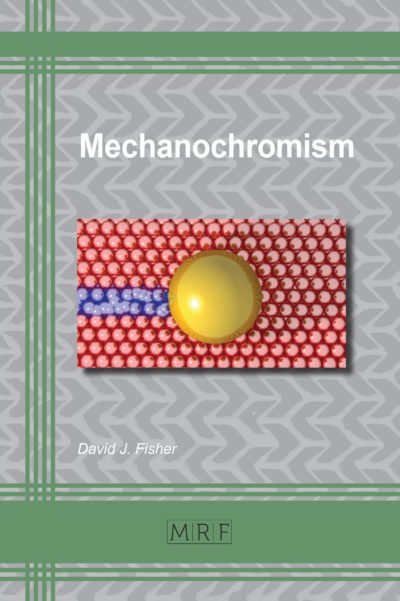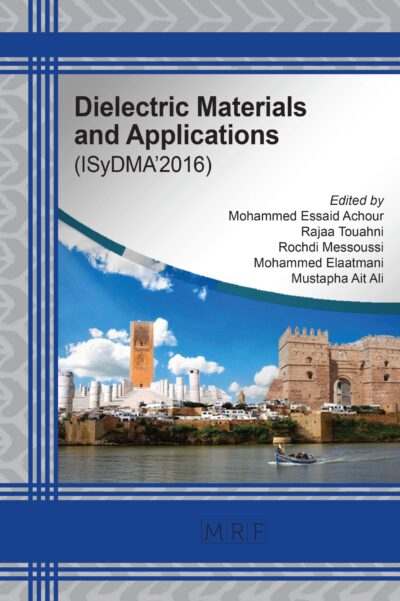–
Experimental and finite element investigation on the effect of process parameters in incremental forming of polymeric materials
RAGAI Ihab, BUFFA Gianluca, VANDALINI, Andrea, FRATINI Livan
download PDFAbstract. The purpose of this paper is to conduct finite element simulations of the incremental forming process of polycarbonate material. The process was simulated using the commercial software LS-Dyna. An explicit loading-implicit unloading approach for springback was set up, reproducing the experimental conditions. The shell element type and the number of integration points along the thickness were defined through a preliminary numerical approach. A spiral 3D surface was generated and measurements of cone geometry were conducted. The model was validated by comparing experimental and numerical thickness in a cross section, and finally used to investigate the effect of step size on the process mechanics. It was found that a decrease in step size would yield to a more uniform thinning along the profile cross section and produces larger thickness reduction.
Keywords
Incremental Forming, Polymers, Formability, FE Analysis, Isothermal Process
Published online 4/24/2024, 10 pages
Copyright © 2024 by the author(s)
Published under license by Materials Research Forum LLC., Millersville PA, USA
Citation: RAGAI Ihab, BUFFA Gianluca, VANDALINI, Andrea, FRATINI Livan, Experimental and finite element investigation on the effect of process parameters in incremental forming of polymeric materials, Materials Research Proceedings, Vol. 41, pp 1517-1526, 2024
DOI: https://doi.org/10.21741/9781644903131-168
The article was published as article 168 of the book Material Forming
![]() Content from this work may be used under the terms of the Creative Commons Attribution 3.0 license. Any further distribution of this work must maintain attribution to the author(s) and the title of the work, journal citation and DOI.
Content from this work may be used under the terms of the Creative Commons Attribution 3.0 license. Any further distribution of this work must maintain attribution to the author(s) and the title of the work, journal citation and DOI.
References
[1] I. Ragai, J. Goldstein, C. Meyer, and C. Upcraft, Effect of Tool Material and Process Parameters on Surface Conditions in SPIF of Polymeric Materials, Proc. of the ASME 2022 Int Mech Eng Cong and Expo (2022), Columbus, OH, USA. https://doi.org/10.1115/IMECE2022-95951
[2] G. Palumbo and M. Brandizzi, Experimental investigations on the single point incremental forming of a titanium alloy component combining static heating with high tool rotation speed, Materials & Design, 2012, pp. 43-51. https://doi.org/10.1016/j.matdes.2012.03.031
[3] P. E. Romero, O. Rodriguez-Albanda, E. Molero, and G. Guerrero-Vaca, Use of the Support Vector Machine (SVM) algorithm to predict the geometrical accuracy in the manufacture of molds via single point incremental forming (SPIF) using aluminized steel sheets, Journal of Materials Research and Technology, 2021, pp. 1562-1571. https://doi.org/10.1016/j.jmrt.2021.08.155
[4] M. Milutinović, R. Lendjel, S. Balos, D. L. Zlatanovic, L. Sevsek, and T. Pepelnjak, Characterization of geometrical and physical properties of a stainless-steel denture framework manufactured by single-point incremental forming, Journal of Materials and Research Technology, 2021, pp. 605-623. https://doi.org/10.1016/j.jmrt.2020.12.014
[5] J. Jeswiet, F. Micari, G. Hirt, A. Bramley, J. Duflou, and J. Allwood, Asymmetric single point incremental forming of sheet metal, CIRP Annals, 2005, pp.88-114. https://doi.org/10.1016/S0007-8506(07)60021-3
[6] B. J. Ruszkiewicz, S. S. Dodds, Z. C. Reese, J. T. Roth, and I. Ragai, Incrementally Formed Stiffeners Effect on the Reduction of Springback in 2024-T3 Aluminum after Single Point Incremental Forming, ASME International Manufacturing Science and Engineering Conference (2015), Charlotte, NC, USA. https://doi.org/10.1115/MSEC2015-9437
[7] T. J. Grimm, I. Ragai, and J. T. Roth, Utilization of wavy toolpath in single-point incremental forming, ASME 2018 Int Mech Eng Cong and Expo (2018), Pittsburgh, PA, USA. https://doi.org/10.1115/IMECE2018-86885
[8] H. Zhu, H. Ou, and A. Popov, Incremental sheet forming of thermoplastics: a review, Int J Adv Manuf Technol 111 (2020) 565–587. https://doi.org/10.1007/s00170-020-06056-5
[9] M. A. Davarpanah, and R. Malhotra, Formability and Failure Modes in SPIF of Metal-Polymer Laminates, Proc. Manuf. 26 (2018), 343-348. https://doi.org/10.1016/j.promfg.2018.07.042
[10] V. Franzen, L. Kwiatkowski, J. Neves, P. A. F. Martins, A. E. Tekkaya, On the capability of single point incremental forming for manufacturing polymer sheet parts, Proceedings of the 9th ICTP-International Conference on Technology of Plasticity (2008), Gyeongju, Korea.
[11] V. Franzen, L. Kwiatkowski, P. A. F. Martins, A. E. Tekkaya, Single point incremental forming of PVC, Journal of Materials and Processing Technology, 2009, pp. 462-469. https://doi.org/10.1016/j.jmatprotec.2008.02.013
[12] P. Martins, L. Kwiatkowski, V. Franzen, A. Tekkaya and M. Kleiner, Single point incremental forming of polymers, CIRP Annals, 2009, pp.229-232. https://doi.org/10.1016/j.cirp.2009.03.095
[13] Y. Li, Z. Liu, W.J.T. Daniel, P.A. Meehan, Simulation and experimental observations of effect of different contact interfaces on the incremental sheet forming process. Mater. Manuf. Process. 29 (2014) 121-128. https://doi.org/10.1080/10426914.2013.822977
[14] B. Lu, Y. Fang, D.K. Xu, J. Chen, H. Ou, N.H. Moser, J. Cao, Mechanism investigation of friction-related effects in single point incremental forming using a developed oblique roller-ball tool. Int. J. Mach. Tools Manuf. 85 (2014) 14–29. https://doi.org/10.1016/j.ijmachtools.2014.04.007
[15] M. Vahdati, R. Mahdavinejad, S. Amini, Investigation of the ultrasonic vibration effect in incremental sheet metal forming process. Proc. Inst. Mech. Eng. Part B J. Eng. Manuf. 231 (2017) 971-982. https://doi.org/10.1177/0954405415578579
[16] G.P. Cai, C.W. Xing, Z.H. Jiang, Z.K. Zhang, Sheet Single point vibration incremental forming process simulation and analysis of process parameters. Advanced Materials Research. 430 (2012) 74–78. https://doi.org/10.4028/www.scientific.net/AMR.430-432.74
[17] T.J. Grimm, I. Ragai, J.T. Roth, A Novel Modification to the Incremental Forming Process, Part 1: Multi-directional Tooling. Procedia Manuf. 10 (2017) 510-519. https://doi.org/10.1016/j.promfg.2017.07.035
[18] T.J. Grimm, I. Ragai, J.T. Roth, A Novel Modification to the Incremental Forming Process, Part 2: Validation of the Multidirectional Tooling Method. Procedia Manuf. 10 (2017) 520-530. https://doi.org/10.1016/j.promfg.2017.07.036
[19] D. Young, J. Jeswiet, Wall thickness variations in single-point incremental forming. Proc. Inst. Mech. Eng. Part B J. Eng. Manuf. 2018 (2004) 218, 1453-1459. https://doi.org/10.1243/0954405042418400
[20] Z. Liu, W.J.T. Daniel, Y. Li, S. Liu, P.A. Meehan, Multi-pass deformation design for incremental sheet forming: analytical modeling, finite element analysis and experimental validation. J. Mater. Process. Technol. 214 (2014) 620-634. https://doi.org/10.1016/j.jmatprotec.2013.11.010
[21] I. Bagudanch, G. Centeno, C. Vallellano and M. Garcia-Romeu, Revisiting formability and failure of polymeric sheets deformed by single point Incremental Forming, Polymer and Degradation Stability, (2017) 366-377. https://doi.org/10.1016/j.polymdegradstab.2017.08.021
[22] C. Upcraft, R. Diefenderfer, C. Vanderwiel and I. Ragai, Toward Better Formability of Polymeric Materials in Single Point Incremental Forming: Effect of Process Parameters, Proc. of the ASME 2023 Int Mech Eng Cong and Expo (2023), New Orleans, LA, USA. https://doi.org/10.1115/IMECE2023-112000
[23] https://www.professionalplastics.com/professionalplastics/content/downloads/MakrolonGPV_Specs.pdf
[24] https://materion.com/-/media/files/alloy/datasheets/moldmax/moldmax-hh-alloy-data-sheet.pdf














